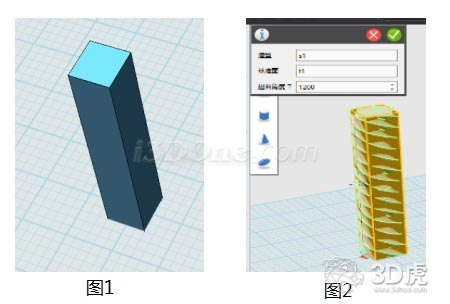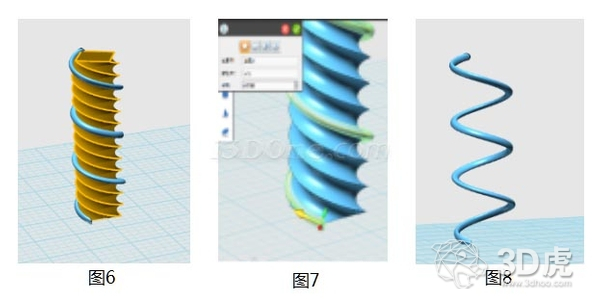Suggestions on 3D printing going into the campus
3D printing technology is a very forward-looking technology. The future application prospect is very broad. In countries with advanced scientific and technological level in the world, “3D design and printing technology†has already been introduced in the technical courses of students. August 21, 2015 Japanese Premier Li Keqiang presided over a special lecture by the State Council: "Discussing the issue of accelerating the development of advanced manufacturing and 3D printing." The country has carried out campus 3D printing teaching exploration in developed regions. We also attach great importance to the introduction of this technology in Yunnan. In the summer vacation of 2015, the Provincial Department of Education organized the education training for “3D Printing Integrated System for Primary and Secondary School Teachers in Yunnan Provinceâ€. In the “Comprehensive Thinning†project in Yunnan Province, a 3D printing integration system was distributed to primary and secondary schools in the province. 3D printing has entered the ordinary campus, with the application of equipment, 3D printing system, the use of 3D software, the management of 3D equipment, teaching content, this series of topics needs to be explored and researched, the author through practice and summary, on 3D Print it into the campus and make some suggestions.
First, popularize 3D knowledge and recognize 3D printing
3D printing technology is a very advanced technology that will be widely used in medical, construction, teaching and daily life. Now, 3D printing came to the campus. Everyone felt new and amazing. When they were amazed, they couldn’t help but say, “What do you do with it? How to use this machine? Is it just printing a few toys? These models are printed, the street is also Can buy..." 3D printing is a new thing. If we don't understand it, we must learn and recognize it. The school trains teachers and some students to popularize the knowledge of 3D printing and improve the interest of teachers and students in 3D printing.
Second, will use, will manage 3D printing equipment
To use it, we will manage this equipment. First, we need to understand this equipment. The complete 3D printing integrated system includes 3D desktop printer, 3D scanner, 3D software, scanner lift, turntable, computer and some maintenance tools, consumables. .
According to the characteristics of this set of equipment, the school should try to choose a slightly wider and better place for lighting when placing the equipment. It is recommended to be placed in the school computer room. This is mainly to take into account the future of 3D modeling teaching, you can make full use of the student machine, let the 3D teaching and information classes organically combine, but also improve the utilization of equipment. Because 3D printing has high requirements on equipment, the equipment configuration of this distribution is relatively high, especially the computer, CPU, memory, graphics card and other hardware can meet the requirements of the teacher machine, can be used as a teacher machine, which is convenient for future 3D Teaching can save money in the construction of the computer room.
3D printers are precision instruments. Do not blindly disassemble when encountering faults. It is best to consult relevant technical personnel first. When operating normally, administrators should pay attention to accumulate experience and eliminate common faults. For example, when a part of the printing process is hit, the silk is not smooth, and the silk cannot be adhered to the model. First, check whether the wire is entangled. The entanglement may cause the wire to be unsmooth, resulting in poor silking, or Equipment calibration. It is the most common fault that can not be smoothly fed or retracted. According to the principle of the wire feeding of the printer, the silk head can be cut into a diagonal mouth. When the wire temperature is reached quickly, the wire can be assisted by hand, which can generally solve the fault. There may be various problems in the process of use. As long as the administrator has more brains or asks the technicians and colleagues for humility, most problems can be solved.
Third, choose 3D software, let 3D printing into the hearts of children
The 3D printing system contains several 3D design software, which is very powerful and can meet the daily teaching needs. The Meshmixer mainly repairs the scanning model, and Tinkercad is mainly used for modeling. Regarding the use of these two softwares, the training materials are detailed, and from the author's practical experience to talk about the application of the modeling software Tinkercad, Tinkercad is very rich in functions, and the processing of the model is more delicate. However, Tinkercad is a foreign software. When we use it, we need to finish it. After Chinese, it is easy to have some problems. For example, the software may be automatically closed during the modeling process. The operator has to save it every time for a while. The software is closed and the model is not saved.
In the 3D modeling software used in primary and secondary school teaching, is there a domestic software suitable for primary and secondary school students, the author and the founding instructors in the developed areas, the first-line teacher exchange process, met 3D One, after detailed understanding and application 3D One is indeed a 3D software suitable for primary and secondary school students. The 3D One software is designed for beginners, using a more intuitive view, clear interface, and various functions have corresponding video tutorial links. Can help learners solve problems in a timely manner. Especially worth mentioning is that 3D One has various versions, which can meet the requirements of different student system. The free home version can be installed on the home computer for teachers and students, and learn outside the classroom. 3D design software is more than service. 3D One is doing a good job in this aspect. They solve the difficulties of the students in time through the QQ group. The organizers regularly teach videos in the QQ group, and invite teachers and students who are skilled to make makers. Tutor, give the students more direct help.
Fourth, the development of school-based textbooks
To open a course, we have to solve the problem of what the students are learning, what the teacher teaches, because the 3D printing course has just entered the school, there is no ready-made teaching materials for the school to use, the author refers to the 3D printing school textbooks of schools in Beijing and other places, comprehensive After some textbooks designed by 3D printing software company, I feel that it is not difficult to write school-based textbooks. It is to write down the operating steps and technical tips, supplemented by software screenshots. The author uses the "sweeping function spring" as an example:
1. Open 3D One;
2. Insert a hexahedron at the center of the screen, 20mm long.
20mm wide and 100mm high; (Figure 1)
3. Use the twist tool to distort the hexahedron by 1200 degrees; (Figure 2)

......
8. Open the sweep tool and sweep the circle along the curve out of the spring to remove the distorted hexahedron; (Figure 6-8)

The school-based textbook developed by the combination of graphic and text has clear guidance for students' learning.
Fifth, the application of micro-courses in 3D teaching
The micro-courses show the learners a certain knowledge point or the characteristics of an operational skill in a video format that is very consistent with the teaching of 3D modeling. Class time is very limited, and it is easy to forget after class. Therefore, the application of micro-course can make up for the shortcomings of 3D modeling teaching. When I bring students to design, I will use the screen recording software to record the operation process. Explain while recording, then post the video to the video site and share the video link to the student. After class, students can watch micro-courses through computers, mobile phones, etc., and learn independently.
Sixth, campus makers
Maker means to try to turn various ideas into reality. 3D printing into the campus, a very important purpose is to cultivate children's creativity, adults' thinking is always limited by reality, children are much more free, 3D The print course allows the child to “realize†the sky. When I was teaching a sixth-grade child to design QQ Penguin, the author according to Tencent's plan, the little penguin was black and white, the figure was round, and the appearance was very cute. The child liked it very much. When he started his own design, he gave the penguin's head and body. Separate, ask him why? He said that the penguin he designed is the future technology, the head is magnetically suspended, can rotate 360 ​​degrees... What a good idea! Our 3D teaching has cultivated children's creativity and made They become campus makers.
3D printing is coming. It is necessary for the school to accept this new thing with an open and positive attitude, and to give support in many aspects. It requires teachers to study hard. 3D printing brings children closer to their dreams, 3D printing, we go to explore and research together, let 3D printing go into our campus and walk into our lives.
Stainless Steel Bottles are made from high-grade 18/8 stainless steel. This material is food grade, non-toxic, durable and easy to clean.
Our Stainless Steel Bottles are mostly Stainless Steel Vacuum Water Bottles. They have a double-wall vacuum treatment, so they can ensure your drink keeps as it is. And you don't need to worry about getting your hands cold or hot.
Vacuum Flask,Stainless Steel Vacuum Flask,Stainless Steel Rainbow Vacuum Flask,Stainless Steel Silk Printing Vacuum Flask
Ningbo Auland International Co.,Ltd. , https://www.eversportsbottle.com